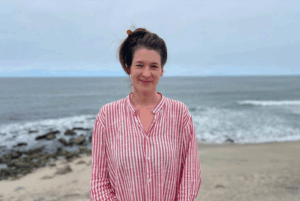Noticias | 18 noviembre, 2022
El investigador CISEPA Guillermo Salas participó en la 2022 American Anthropological Association Annual Meeting
El investigador CISEPA Guillermo Salas participó en la ponencia Maps’ Entanglements and Mountains’ Multiplicity: State Institutions, Pilgrims and Mining in the Southern Peruvian Andes en el panel Ecocentric Reciprocities: Valuing More-Than-Human Landscapes de la 2022 American Anthropological Association Annual Meeting, desarrollado entre el 9 y 13 de noviembre en Seattle, Washington.Abstract de la ponencia:
This paper analyzes how the agency of state maps triggered a conflictive scenario in which the same group of mountains emerged as multiple entities within and beyond the nature- culture divide. The Quyllurit’i shrine, located at the bottom of the Qulqipunku glacier, is the focus of the biggest pilgrimage of the Southern Peruvian Andes. It is a Catholic shrine, however, the pilgrim-dancers’ practices involve the sentient agency of the glacier and the Christ image/rock emerges as a sentient being in itself. The state declared a Protected Area for the shrine in 2010 and the pilgrimage was included on UNESCO’s Intangible Heritage List in 2011. However, the state also had been granting mining concessions around the shrine. Faced with a map of the Protected Area surrounded and even intruded by mining concessions, the pilgrims’ organizations demanded their annulment and carried out protests that paralyzed the city center in 2016. The community where the shrine is located experienced these events as a process of expropriation of its lands. Some community members and the community itself had requested these mining concessions and aimed to develop mining in their lands, and the state maps put them in open conflict with the pilgrims’ organizations. These conflicts involved mountains emerging as multiple assemblages – nature to be mined, the scenario of culture, sentient mountains, and devil-like beings that mediate mineral extraction – and was triggered by the agency of state-sanctioned maps rather than by mining activity in the area, which is, so far, absent in the area.




